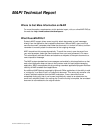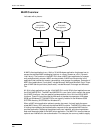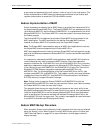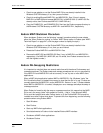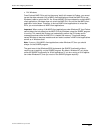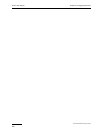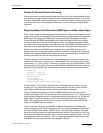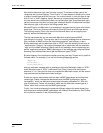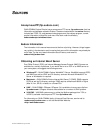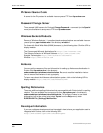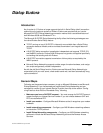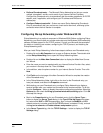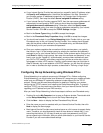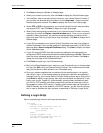
Practical Issues Eudora User Manual
255
QUALCOMM Incorporated
Turning Off Quoted-Printable Encoding
Eudora automatically uses quoted-printable encoding if your mail contains special charac-
ters. Eudora also uses quoted-printable encoding for attached plain text files. If your recip-
ients don’t have MIME, quoted-printable may hurt more than it helps. If that’s the case, just
turn off the QP button in the message Toolbar when you are sending text files to those
recipients.
Mapping Between File Extensions, MIME Types, and Macintosh Types
Since Eudora needs to have the appropriate extensions on attachment filenames in order
to open them up from the message, Eudora has the ability to map between file extensions,
MIME types and subtypes, and Macintosh creators and types. Messages received by
Eudora can grab the MIME type/subtype and/or Macintosh creator/type from an attach-
ment and map that into the correct file extension. Also, on outgoing messages, Eudora
can make sure that attachments are encoded with the correct MIME type/subtype and/or
Macintosh creator/type depending on the file extension of the attachment being sent.
Eudora knows about some MIME types. However, since new MIME types are being
defined all the time, it may be necessary to add to Eudora’s knowledge from time to time.
Adding new mappings between the various types only requires editing the EUDORA.INI
file with a text editor (like the one that comes with Eudora).
There is a section in the EUDORA.INI file labeled [Mappings], followed by some entries,
one per line. Each entry is called a map. A map defines when the mapping should occur
(which can be “in,” “out,” or “both”), followed by an equals sign and five parameters. These
five parameters are (in order) the computer file extension, the Macintosh creator code, the
Macintosh type, the MIME type, and the MIME subtype. Here are some sample entries:
[Mappings]
both=gif,,,image,gif
both=mpg,,,video,mpeg
both=doc,MSWD,,,
in=xls,XCEL,,,
out=xls,XCEL,XLS4,,
both=eps,,EPSF,application,postscript
A map marked “in” only tries to match the map to messages that you receive. A map
marked “out” only tries to match the map to messages that you send. A map marked
“both” tries to match the map to both incoming and outgoing messages.
The first map above says that any incoming MIME message that has a part type of
“image” and subtype of “gif” will get saved to a file with the extension “.gif.” It also specifies
that outgoing messages that have an attachment with the file extension “.gif” will get the
MIME type of “image” and subtype of “gif” if the encoding method of the message is
MIME. The second map is similar to the first map in structure, but uses a different file
extension and MIME type and subtype.
You can use map entries to move between computer file extensions and Macintosh
creator and type as well. The third map says that if an incoming message has an attach-
ment with the Macintosh creator “MSWD” (which is the Macintosh creator for Microsoft
Word) then the file extension of the attachment when saved to disk should be “.doc” (the
file extension that Word for Windows uses). Since the map is marked as “both,” it will also
give attachments with the extension “.doc” on outgoing messages the Macintosh creator
of “MSWD” if the encoding method of the message is BinHex.



